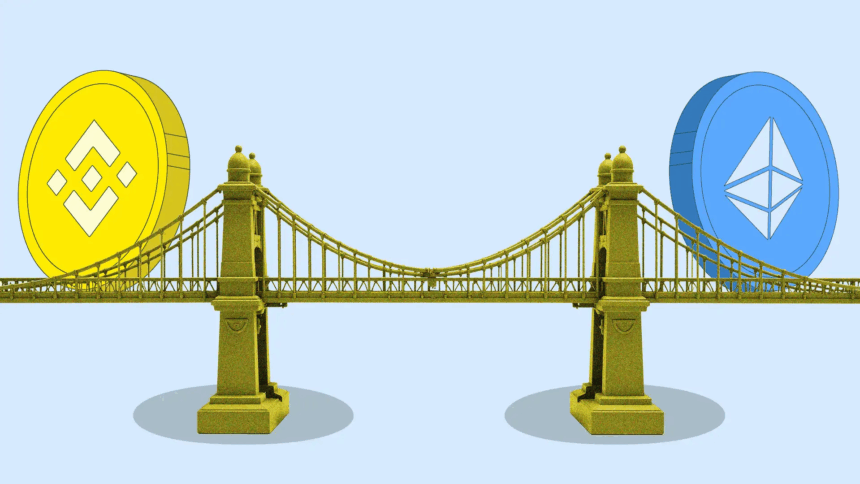In this piece, we’ll look at how to quickly and safely move tokens using the best bridges available. For speed, safety, and minimal cost, blockchain bridges let users interchange tokens on different networks effortlessly.
- Understanding Blockchain Bridges
- How to Move Tokens Fast & Safely Using the Best Bridges
- Example: Transferring Tokens from Ethereum to Polygon via Polygon Bridge
- Step 1: Connect Your Wallet
- Step 2: Select Source and Destination Chains
- Step 3: Enter the Token Amount
- Step 4: Confirm the Transaction
- Step 5: Verify Transfer
- Step 6: Safety Tips
- Why Speed and Safety Matter
- Minimize Risks with Rapid Transactions
- Keeping Your Tokens Safe.
- Steering Clear of Network Congestion Problems
- Trust and Confidence in the System
- Cost Efficiency
- Top Bridges to Move Tokens Fast & Safely
- Safety Tips for Using Bridges
- Use Official and Verified Links
- Start with Small Transactions
- Check Bridge Security and Audits
- Keep Wallets Secure
- Avoid Unsupported Tokens
- Monitor Network Fees and Congestion
- Stay Updated on Bridge Announcements
- Key Features of the Best Bridges
- Quick Transfer Speeds
- Excellent Security
- Extensive Multi-Chain Support
- Inexpensive Transfer Costs
- Easy and Straightforward Design
- Greater Dependability and Uptime
- Safety and Transparency
- Common Mistakes to Avoid
- Using Unverified or Unknown Bridges
- Sending Unsupported Tokens
- Ignoring Network Fees and Congestion
- Skipping Test Transactions
- Sharing Private Keys or Seed Phrases
- Overlooking Transaction Confirmation
- Relying Solely on Speed
- Pros & Cons
- Conclusion
- FAQ
Here, we will analyze the best bridges, their distinctive characteristics, and a few easy methods to optimize cross-chain transfers in a secure, dependable manner for novices and expert users alike.
Understanding Blockchain Bridges
A blockchain bridge allows different blockchain networks to communicate with one another. Blockchains normally function independently which makes transferring assets and information difficult.

Bridges accommodate this by locking tokens on the original blockchain and creating identical tokens on the new one to ensure a constant supply. Bridges may be centralized, with one entity in control, or decentralized, using smart contracts and validators for protection.
Bridges improve the interoperabilty of the blockchain, improve liquidity, and allow users to experience different ecosystems. Bridges are, however, susceptible to security breaches if the overstretched audits leave the systems unattended.
How to Move Tokens Fast & Safely Using the Best Bridges
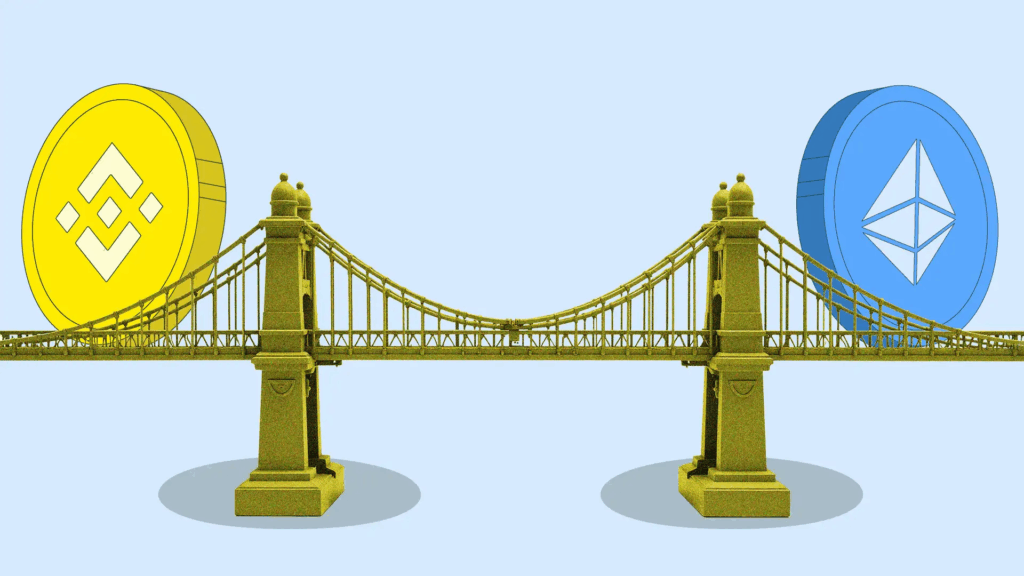
Example: Transferring Tokens from Ethereum to Polygon via Polygon Bridge
Step 1: Connect Your Wallet
- Visit the official Polygon Bridge.
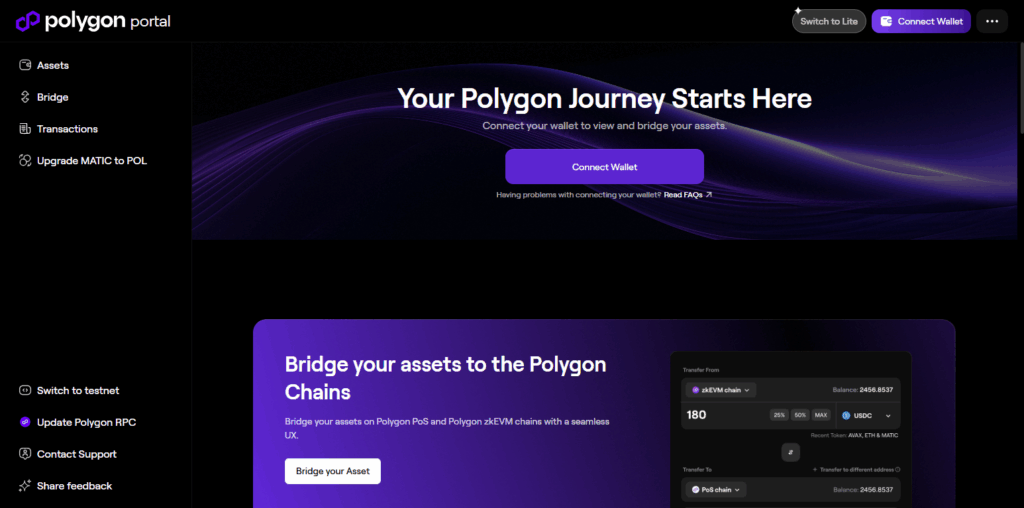
- Connect a secure wallet like MetaMask or Coinbase Wallet.
- Make sure your wallet is set to the correct source network (Ethereum in this case).
Step 2: Select Source and Destination Chains
- Choose Ethereum as the source chain.
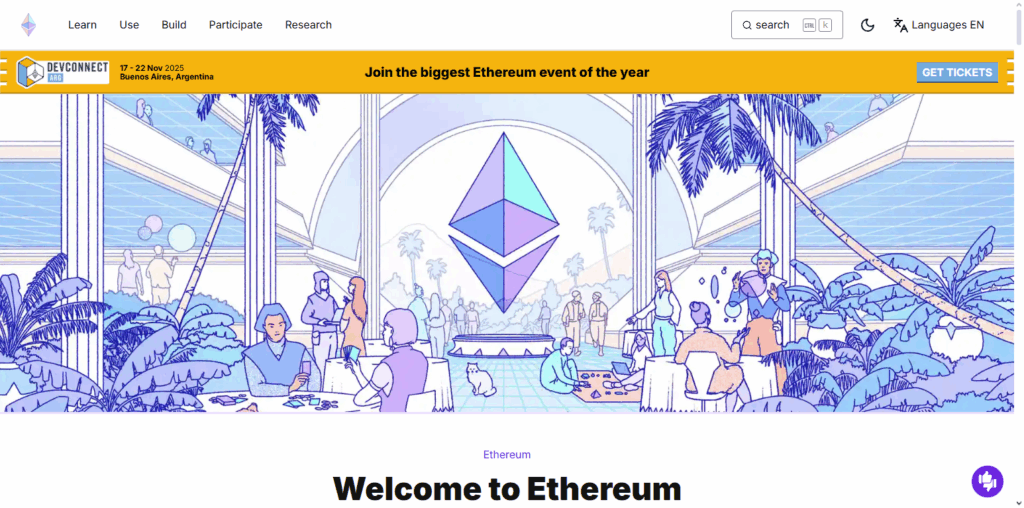
- Choose Polygon as the destination chain.
- Select the token you want to transfer (e.g., USDC, MATIC).
Step 3: Enter the Token Amount
- Specify the amount of tokens to bridge.
- Check the network fees and estimated transaction time.
Step 4: Confirm the Transaction
- Approve the token transfer in your wallet.
- Confirm the bridging transaction.
- Wait for the confirmation on both chains (Ethereum and Polygon).
Step 5: Verify Transfer
- Once confirmed, check your wallet on the destination chain.
- Ensure the bridged tokens appear correctly.
Step 6: Safety Tips
- Always use official bridge links to avoid scams.
- Test with a small amount first if transferring a large sum.
- Safeguard your wallet at all times and do not share your private keys with anyone.
Why Speed and Safety Matter
Minimize Risks with Rapid Transactions
- Transfers are slow and you might miss a trading opportunity or incur price slippage.
- A fast transfer makes sure the tokens are in your hands when it is time to trade, stake, or engage in other blockchain activities.
Keeping Your Tokens Safe.
- Bridges with substandard safety protocols can be exposed to hacks, scams, or smart contract bugs.
- Making sure it is safe avoids losing your funds when moving them across chains.
Steering Clear of Network Congestion Problems
- Due to network congestion, slow bridges can become stuck and your transactions can be delayed.
- Reliable bridges help you to avoid delays when moving tokens.
Trust and Confidence in the System
- Secure and rapid transfers increase user confidence in the system.
- Trust reduces the stress and mistakes related to large token transfers.
Cost Efficiency
- Fast transfers help in z minimizing waiting transaction fees and repeated attempts.
- Reduces the costs associated with stalled moves or delayed transactions.
Top Bridges to Move Tokens Fast & Safely
Binance Bridge
Binance Bridge offers one of the best and most secure options for rapid token transfers. Its cross-chain compatibility and security measures are unmatched. It allows users to transfer a range of tokens across blockchains like Ethereum, BSC, and Bitcoin without unnecessary complications.
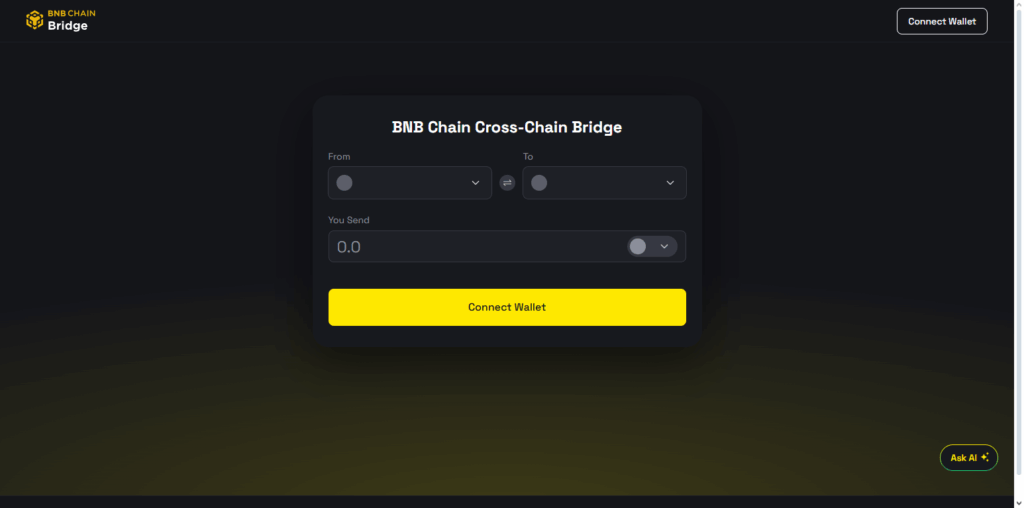
The bridge constructed by Binance’s advanced infrastructure and trusted smart contracts lowers the chances of hacks and failed transactions. Users enjoy rapid transactions, nominal costs, and real-time confirmation, which are suitable for traders and DeFi users. Its simple design and status as Binance’s partner make it a dependable and effective bridge for token transfers.
Wormhole
Wormhole is a top blockchain bridge service. With it, users perform rapid and secure cross-chain token transfers on Solana, Ethereum, Binance Smart Chain, and Terra. Wormhole’s greatest advantage is its use of a decentralized system consisting of independent guardians for validating transfers.
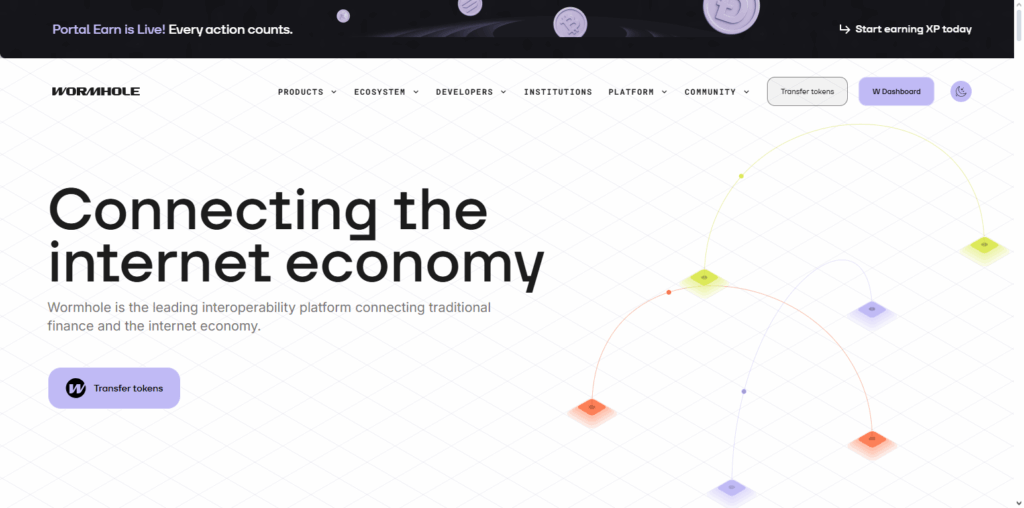
This minimizes single points of failure and greatly increases security. Wormhole is also fast, for token holders looking to make quick transfers with safety as a priority, as it offers near-instant transfers on a multitude of supported tokens.
Providing a cross-chain bridge with minimal trust and maximum security is a key feature affered at Wormhole. Trust is earned with minimal fees, thorough audits, and seamless cross-chain interoperability.
Multichain
Multichain is a top choice perfomance cross-chain infrastructure. It is a member of the greatest multi-chain ecosystem. It can be integrated with many blockchains such as Ethereum, BSC, POLYGON, AVALANCHE, FANTOM, and many more.

It is one of the most flexible cross-chain systems. The cross-chain router protocol is one of the most flexible cross-chain systems. It immacroves failure and hack risks. The efficiency of the overall protocol improves the system of risk cross-hacks and do not fail.
The system is flexible and designed to fulfill the business standards, as well as the ease of functioning for the average customer. V The overall combination of the flexible router system and the cross-chain multi-layer technologies for most interoperable systems is the top value.
Safety Tips for Using Bridges
Use Official and Verified Links
Access bridges only from their official websites or trusted sites. This will help avoid phishing scams.
Start with Small Transactions
For your first transactions, start with a small amount. This ensures that there are no issues before transferring larger amounts.
Check Bridge Security and Audits
Choose to use bridges that have audits and upper level security and safety standards.
Keep Wallets Secure
Secure your private keys or seed phrases, and use wallets that are trusted like MetaMask or a hardware wallet.
Avoid Unsupported Tokens
You don’t want to lose a token, so check that the token is supported on both the source and destination chains.
Monitor Network Fees and Congestion
Estimate the network fees and check how congested the network is. Highly congested networks will greatly delay and may even block a transaction.
Stay Updated on Bridge Announcements
To avoid issues on transfers, check for maintenance or security alerts before using a bridge.
Key Features of the Best Bridges
Quick Transfer Speeds
- Facilitate near-instant transfers across multiple networks, ensuring minimal slippage or delay.
Excellent Security
- Protect user funds using auditable smart contracts, decentralized validation, and encryption properly incorporated.
Extensive Multi-Chain Support
- Support many blockchains allows token transfers across Ethereum, BSC, Polygon, Solana, etc.
Inexpensive Transfer Costs
- Provide cost-effective transfers across blockchains saving user’s money.
Easy and Straightforward Design
- Simple and intuitive platforms helps new and experienced users safely and quickly achieve token transfers.
Greater Dependability and Uptime
- Token transfers and all services are offered seamlessly and consistently without unexpected functional downtimes.
Safety and Transparency
- Ensure user’s transfers can be safe verified via audited logs and traceable transaction histories.
Common Mistakes to Avoid
Using Unverified or Unknown Bridges
- Bridges that are not audited or widely trusted makes them more easy to hacks.
Sending Unsupported Tokens
- Always make sure to verify if the token is supported on the source chains and the destination chains to prevent token loss.
Ignoring Network Fees and Congestion
- Ignoring high gas fees and network congestion is a sure way to delay a transaction.
Skipping Test Transactions
- Not giving the option to test a transaction– by letting you send a smaller amount.
Sharing Private Keys or Seed Phrases
- Crypto bridges don’t require credentials wallets to do a transaction.
Overlooking Transaction Confirmation
- Not consolidating each transaction on the chains is a sure way to block fund access and confusion.
Relying Solely on Speed
- Using a provider, only for speed is a sure way to lose reliability and trust in the provider.
Pros & Cons
| Pros | Cons |
|---|---|
| Cross-chain compatibility – move tokens seamlessly between different blockchains | Security risks – vulnerable to hacks or smart contract exploits |
| Fast transactions – near-instant transfers for trading and DeFi activities | Network congestion – delays or failed transactions during high traffic |
| Access to multiple ecosystems – interact with various blockchains without multiple wallets | Limited token support – not all tokens supported on every bridge |
| Cost efficiency – lower fees compared to manual swaps or exchanges | Potential fees – gas or service fees can be high on some networks |
| Enhanced flexibility – supports a wide range of tokens and stablecoins | Complexity for beginners – confusing setup can lead to errors |
Conclusion
When someone needs to engage with several different blockchains, ensuring tokens are moved quickly and securely is a top priority.
The most reputable bridges, including Binance Bridge, Wormhole, AnySwap, and Multichain, guarantee almost instantaneous transactions while protecting assets during transfers within reasonable costs.
The most crucial points to keep in mind are working with bridges that have undergone auditing, conducting initial transactions with small amounts, and considering the network fees and congestion.
With a proper understanding of the bridges, users are able to safely and confidently move tokens cross chains with a reliable and efficient bridge. Safe and efficient bridges are the best way to obtain a wide range of blockchains.
FAQ
Can I transfer any token using a bridge?
Not all tokens are supported on every bridge. Always verify that your token is compatible with both the source and destination chains.
Which bridges are safest for transferring tokens?
Top safe bridges include Binance Bridge, Wormhole, AnySwap, and Multichain. Look for bridges that are audited, decentralized, and widely trusted.
What is a blockchain bridge?
A blockchain bridge is a technology that enables tokens and data to move between different blockchain networks, ensuring interoperability and seamless cross-chain transfers.



